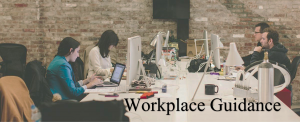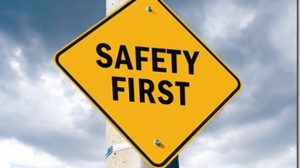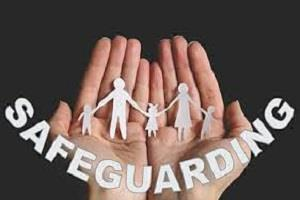
When entering a new workplace you must ensure not only your safety, but that you are presented in a professional way. This post will explore different areas that employers will look at when you start a new job!

Personal Safety
 Personal safety at work involves ensuring that the environment that is being worked in is fit for purpose and free from danger for yourself and others. Removing trip hazards and reporting faulty appliances are just two of the basic ways in which the workplace can be made safe. “it’s important that these ‘common sense’ responses become common practice to keep people safe” (SHP, 2017)
Personal safety at work involves ensuring that the environment that is being worked in is fit for purpose and free from danger for yourself and others. Removing trip hazards and reporting faulty appliances are just two of the basic ways in which the workplace can be made safe. “it’s important that these ‘common sense’ responses become common practice to keep people safe” (SHP, 2017)
One way to gauge the amount of risk, and whether it is necessary, is to carry out a risk assessment. This could be looking at each room in a building, or analysing a specific activity, and writing down the elements of risk involved, how large the risk is, how much impact it could have on yourself and colleagues and how that risk can be reduced/mitigated.
The Health and Safety at Work Act (1974) and Management of Health and Safety at Work Regulations Act (1999) provide guidelines and standards that employers and employees should follow to ensure best practice in regard to safety in the workplace.
Safeguarding
 “Safeguarding is the practice of ensuring that vulnerable people have their health, well-being and rights protected in society.” (Brooke, 2017). Safeguarding is in place to protect all employees with their rights and safety. The following are covered under safeguarding:
“Safeguarding is the practice of ensuring that vulnerable people have their health, well-being and rights protected in society.” (Brooke, 2017). Safeguarding is in place to protect all employees with their rights and safety. The following are covered under safeguarding:
Health – This involves ensuring employees are able to take their medication when required and any personal health needs are catered to.
Discrimination – Ensuring the Equality Act (2010) is adhered to and that nobody suffers discrimination in the workplace regardless of their beliefs, race or disabilities.
Abuse – This covers ensuring that employees do not fall victim to verbal or physical abuse in the workplace. This means reporting any harassment or bullying if identified or witnessed. These are also covered by the Equality Act (2010)
Professionalism
 Professionalism is defined as “a calling requiring specialized knowledge and often long and intensive academic preparation.” (Mind Tool Content Team, 2018). Being professional covers anything from a person’s personal appearance, emotional intelligence and resilience. It is recommended that an employee is familiar to the rules of a work place as this will protect them if any issues arise. IF someone is seen as unprofessional this can have a direct impact to the service and output provided.
Professionalism is defined as “a calling requiring specialized knowledge and often long and intensive academic preparation.” (Mind Tool Content Team, 2018). Being professional covers anything from a person’s personal appearance, emotional intelligence and resilience. It is recommended that an employee is familiar to the rules of a work place as this will protect them if any issues arise. IF someone is seen as unprofessional this can have a direct impact to the service and output provided.
Reflective Practise
 Reflective practice is a form of studying your own life experiences to improve the way in which you work (Brightside, 2018). It is important within a work place as it helps to improve the way in which you react to certain situations (Skill You Need, 2018).
Reflective practice is a form of studying your own life experiences to improve the way in which you work (Brightside, 2018). It is important within a work place as it helps to improve the way in which you react to certain situations (Skill You Need, 2018).
References
SHP (2017) What is personal safety? [Online] Available at https://www.shponline.co.uk/what-is-personal-safety/ (Accessed:14/05/2018).
Brooke, E (2017) Safeguarding in the Workplace [Online] Available at https://www.virtual-college.co.uk/news/safeguarding/2017/11/safeguarding-in-the-workplace (Accessed:14/05/2018).
Mind Tools Content Team (2018) Professionalism [Online] Available at https://www.mindtools.com/pages/article/professionalism.htm (Accessed:14/05/2018).
Brightside (2018) What is reflective practice? [Online] Available at https://brightknowledge.org/medicine-healthcare/what-is-reflective-practice (Accessed:14/05/2018).
Skills You Need (2018) Reflective Practise [Online] Available at Reflective Practice Read more at: https://www.skillsyouneed.com/ps/reflective-practice.html (Accessed:14/05/2018).
